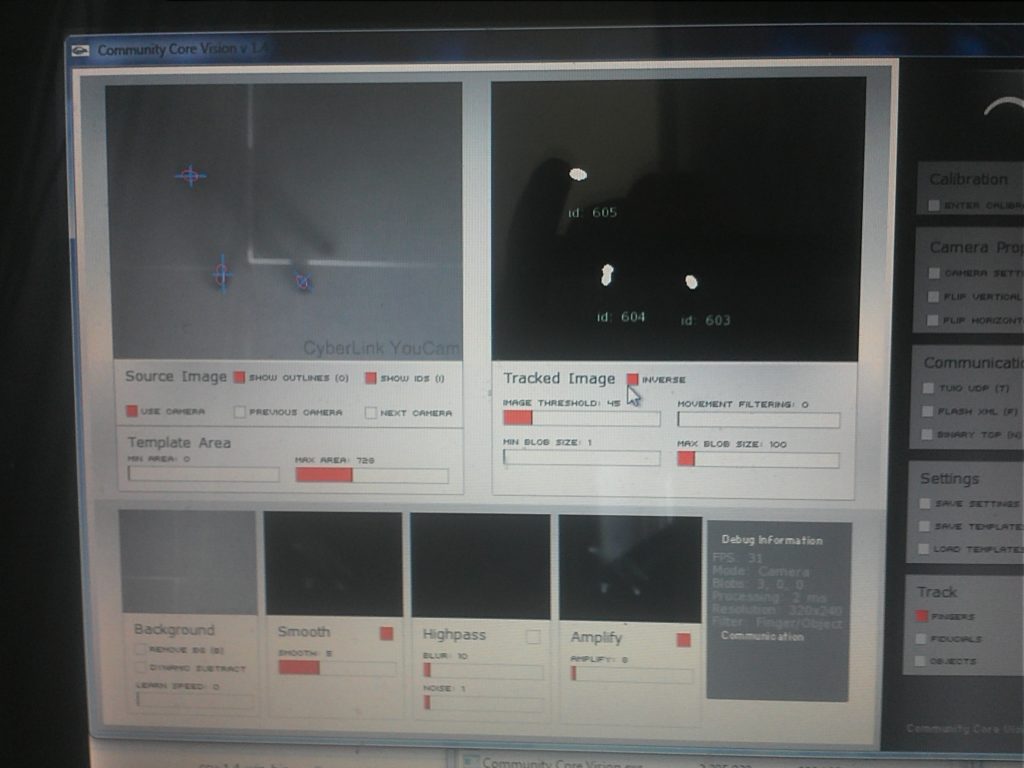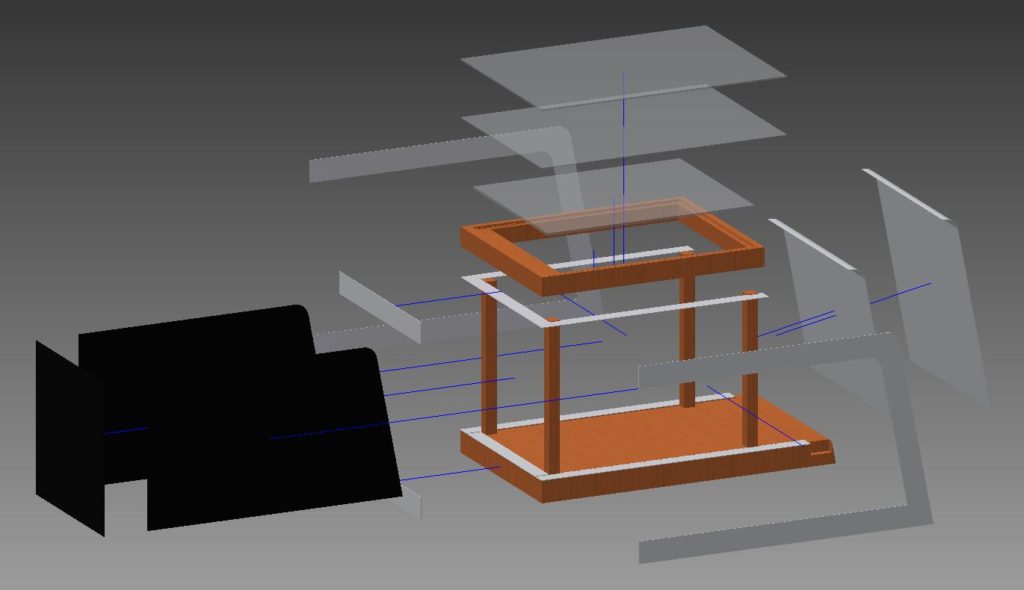A very early project to engineer a desk table with built in computer interface extension.
This project, developed over the summer of 2013, was one of the first ever long-form, self-directed projects I undertook. A small, movable work table with a reflected PC display extension and touch capability. It was built on the open source software Community Core Vision (CCV).

CCV is an open source software designed to interpolate data from an infra-red camera for use in this kind of project. The above image shows data from an experiment before the LED arrays were even introduced (i.e. working only with ambient IR light), already the software can detect ‘clicks’.

The device works by flooding the display sheet of polymethacrylate with strips of infra-red light via IR LED arrays. A small standard webcam is housed inside, modified to block visible light and pick up IR radiation. The IR light is even throughout the sheet until something comes into contact with the surface, at which point light deflects into the camera. The camera is in continuous use by the CCV software.

To design the casing, I created a minimalist but aesthetic form, inspired by the set design of one of the Star Trek movies. The display is created by linear setup of a projector reflecting off a mirror. The table has to encase the projector reflection assembly and camera with minimal light bleeding in so avoiding a ‘blocky’ aesthetic was a challenge.

A full assembly was designed with a wooden frame clad in sections of polymethacrylate to give a smooth aesthetic in line with trends at the time. The table was designed with home / workshop manufacture in mind; I did intend to make it only opting not to due to cost and storage constraints.
In reflection I realised that I had, for the longest time, brushed away this project because of a restrictive mindset I was in at the time; this has no particularly beautiful renders or SQA-style presentation sheets. However, on closer analysis, I am very satisfied with how this project came out; the design was ready for manufacture, the projector camera assembly was working, acting as a proof of concept, and much was learned about electronics, interface software and engineering techniques which would serve useful later on.

